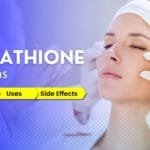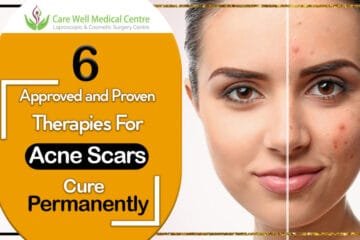Introduction:
Skin whitening treatment is a cosmetic procedure that is designed to reduce the appearance of dark spots, blemishes, and hyperpigmentation while also lightening the overall tone of the skin. It has become increasingly popular in recent years, but it’s important to understand how the treatment works before deciding to undergo it.
Skin color plays a significant role in our physical appearance, and many people seek permanent skin whitening treatments to achieve a lighter and more even skin tone. However, it’s important to understand the science behind skin color and how skin whitening treatments work to avoid any potential risks or side effects. In this article, we will delve deeper into the different methods of skin whitening treatment and how they work to lighten the skin.
The Science behind Skin Color
Melanocytes, which are specialized cells located in the epidermis, produce different types and quantities of melanin, which determines the color of our skin. Melanin is a pigment that provides color to our hair, skin, and eyes. There are two types of melanin: eumelanin, which provides a brown or black color, and pheomelanin, which provides a red or yellow color.
Genetics play a role in determining the amount of melanin that melanocytes produce, but other factors like sun exposure, hormones, and some medications can also have an impact. For example, when exposed to sunlight, melanocytes produce more melanin in an effort to protect the skin from UV damage. This is why people who live in sunny climates tend to have darker skin than those who live in colder climates.
- Genetics, sun exposure, hormones, and medications are just a few of the variables that can affect melanin production.
- The amount and type of melanin produced determine our skin color, which can range from very light to very dark.
- Skin-whitening treatments aim to reduce melanin production and lighten the overall tone of the skin.
- There are different methods of full-body skin whitening treatment, including topical treatments, chemical peels, and laser therapy.
- The effectiveness of skin-whitening treatments varies depending on the individual and the method used.
- It’s important to consult a dermatologist before undergoing any skin-whitening treatment to ensure safety and effectiveness.
In addition to these external factors, certain medical conditions, such as vitiligo or post-inflammatory hyperpigmentation, can also affect melanin production and lead to uneven skin tone. This is where skin whitening treatment comes in; it aims to reduce melanin production and lighten the overall tone of the skin. In the following sections, we will explore the different methods of permanent skin whitening treatment and how they work to achieve this.
How Does Skin Whitening Treatment Work?
There are several different methods of skin whitening treatment available, and each method works in a slightly different way to reduce melanin production and lighten the skin. In this section, we will provide an overview of the most common methods of skin whitening treatment and explain how each one works.
Topical Treatments
Topical treatments, such as creams and serums, are a popular option for permanent skin whitening. These products contain active ingredients such as hydroquinone, kojic acid, and vitamin C, which work to inhibit melanin production and reduce the appearance of dark spots and hyperpigmentation. Some topical treatments also contain exfoliating agents like alpha-hydroxy acids (AHAs) and beta-hydroxy acids (BHAs), which help to remove dead skin cells and reveal brighter, more even-toned skin.
Chemical peels
Chemical peels are another option for skin-whitening treatments. During a chemical peel, a solution containing a combination of acids is applied to the skin, which causes the outer layers to peel away. This process helps to reduce the appearance of dark spots and hyperpigmentation while also stimulating collagen production and improving skin texture.
Laser Therapy
Laser therapy is a more invasive option for skin-whitening treatments. During laser therapy, a laser is used to target and destroy melanin-producing cells in the skin. This process helps to reduce the amount of melanin in the skin, resulting in a lighter, more even skin tone. Laser therapy can be quite effective, but it also carries some risks, including the potential for scarring and hyperpigmentation.
Each method of skin whitening treatment has its own set of advantages and disadvantages, and the effectiveness of each method can vary depending on the individual and the severity of their skin concerns. It’s important to consult a dermatologist to determine which method of skin-whitening treatment is right for you.
Topical Treatments
Topical treatments are a popular choice for those looking to lighten their skin tone. These treatments typically come in the form of creams or serums and contain active ingredients that work to reduce the amount of melanin in the skin. One of the most commonly used ingredients in skin-tightening products is hydroquinone, which works by inhibiting an enzyme called tyrosinase, which is responsible for melanin production. Other ingredients commonly found in skin-whitening products include kojic acid, vitamin C, and niacinamide.
Here are some additional bullet points to provide more information on topical skin-whitening treatments:
- Topical treatments are typically applied directly to the skin and can be used on the face, neck, and other areas of the body.
- Some topical treatments may cause mild irritation or redness, especially if used in high concentrations or for extended periods of time.
- It’s important to use skin-whitening products as directed and to avoid sun exposure while using these treatments, as they can increase the risk of sun damage.
- Results from topical skin whitening treatments may take several weeks or months to become noticeable, depending on the severity of the hyperpigmentation.
Overall, topical skin whitening treatments can be an effective way to reduce the appearance of dark spots and hyperpigmentation. However, it’s important to choose a product that is appropriate for your skin type and to use it as directed to avoid any potential side effects. Consult a dermatologist if you have any concerns about using a skin-whitening product.
Microdermabrasion
Microdermabrasion is a non-invasive skin treatment that uses a special tool to exfoliate the outer layers of the skin. This process helps to remove dead skin cells and stimulate collagen production, resulting in smoother, more even-toned skin. Microdermabrasion can also be used as a skin whitening treatment, as it can help to reduce melanin production and lighten areas of hyperpigmentation.
Here are some additional points to provide more information on microdermabrasion:
- There are two main types of microdermabrasion: crystal and diamond-tip. Crystal microdermabrasion uses a wand that shoots out tiny crystals to exfoliate the skin, while diamond-tip microdermabrasion uses a diamond-tipped wand to gently exfoliate the skin.
- Microdermabrasion is a gentle treatment that typically does not require any downtime. However, some redness or mild swelling may occur immediately following the treatment.
- Microdermabrasion can be used on the face, neck, chest, and other areas of the body to improve the appearance of hyperpigmentation, fine lines, and other skin concerns.
- Results from microdermabrasion treatments are typically subtle and may require multiple sessions to achieve optimal results.
While microdermabrasion is generally considered a safe and effective skin treatment, it’s important to discuss any concerns or potential risks with a dermatologist before undergoing the procedure. Additionally, those with sensitive skin or certain medical conditions may not be suitable candidates for microdermabrasion.
Cryotherapy
Cryotherapy is a newer and less common skin-whitening treatment that involves freezing the skin to reduce melanin production. During this treatment, liquid nitrogen is used to freeze the skin, which helps destroy the melanin-producing cells. This process can be used to target specific areas of hyperpigmentation, such as dark spots or freckles.
Here are some additional points to provide more information on cryotherapy:
- Cryotherapy is a relatively quick and painless treatment, with most sessions lasting only a few minutes.
- There are several different types of cryotherapy available, including whole-body cryotherapy and targeted cryotherapy.
- Whole-body cryotherapy involves exposing the entire body to extremely low temperatures for a short period of time, while targeted cryotherapy involves focusing on specific areas of the skin.
- Cryotherapy may be associated with some mild side effects, such as redness, swelling, or blistering, but these typically resolve on their own within a few days.
While cryotherapy can be an effective way to reduce hyperpigmentation, it’s important to choose a qualified provider and discuss any potential risks or side effects with a dermatologist before undergoing treatment.
Oral supplements and medications
Oral supplements and medications can also be used to reduce melanin production and lighten the skin tone. These treatments function by focusing on the internal production of melanin, not just on the skin’s surface. They typically contain ingredients such as glutathione, vitamin C, and alpha-lipoic acid, which have been shown to inhibit melanin production.
Here are some additional points to provide more information on oral supplements and medications for skin whitening:
- Oral supplements and medications are typically taken in the form of capsules or tablets and are available over the counter or by prescription.
- Glutathione is one of the most commonly used ingredients in skin whitening supplements and works by binding to the enzyme responsible for melanin production and inhibiting its activity.
- Vitamin C is another popular ingredient in skin-whitening supplements and works by reducing the amount of melanin produced by the skin.
- Alpha-lipoic acid is a powerful antioxidant that can help reduce hyperpigmentation and improve skin texture.
- While oral supplements and medications can be effective in reducing hyperpigmentation, they may take longer to see results compared to topical treatments or chemical peels.
It’s important to consult with a healthcare provider before starting any new oral supplements or medications, as some may interact with other medications or have potential side effects. Additionally, it’s important to use these treatments as directed and to follow a healthy diet and lifestyle to maximize their effectiveness.
Chemical Peels
Chemical peels are another option for those looking to lighten their skin tone and reduce the appearance of dark spots and hyperpigmentation. During a chemical peel, a solution containing a combination of acids is applied to the skin, which causes the outer layers of the skin to peel away. This process helps to reveal brighter, more even-toned skin while also stimulating collagen production and improving skin texture.
Here are some additional points to provide more information on chemical peels:
- There are several different types of chemical peels available, ranging from mild to more intense treatments.
- Superficial peels are the mildest form of chemical peel and typically contain alpha-hydroxy acids (AHAs) such as glycolic acid or lactic acid. These peels are suitable for those with mild hyperpigmentation or dull skin and typically require little to no downtime.
- Medium-depth peels contain trichloroacetic acid (TCA) and are suitable for those with more moderate hyperpigmentation or sun damage. These peels may require a few days of downtime, as the skin may appear red and flaky for several days after the treatment.
- Deep peels are the most intense form of chemical peel and typically contain phenol. These peels are suitable for those with severe hyperpigmentation or deep wrinkles, but they require significant downtime and may be associated with more significant side effects.
As with any skin treatment, it’s important to consult a dermatologist to determine which type of chemical peel is right for you and to discuss any potential risks or side effects associated with the treatment.
Laser Therapy
Laser therapy is a more advanced skin-whitening treatment that uses targeted laser energy to reduce the production of melanin in the skin. The melanin in the skin breaks down and is absorbed by the body during laser therapy when a focused light beam is pointed at the affected area. This process helps to reduce the appearance of dark spots and hyperpigmentation while also stimulating collagen production and improving skin texture.
Here are some additional points to provide more information on laser therapy for full-body skin whitening:
- There are several different types of lasers used for skin whitening treatment, including fractional lasers, Q-switched lasers, and intense pulsed light (IPL) lasers.
- Fractional lasers work by creating microscopic injuries in the skin, which stimulate the body’s natural healing response and encourage collagen production. This process helps reduce the appearance of dark spots and hyperpigmentation while also improving skin texture and tone.
- Q-switched lasers emit high-energy pulses of light that break down the pigment in the skin. These lasers are typically used for more severe cases of hyperpigmentation or melasma and may require multiple treatments for the best results.
- IPL lasers use a broad spectrum of light to target melanin in the skin and are often used to treat sun damage, freckles, and other types of hyperpigmentation.
Laser therapy can be an effective way to achieve a more even skin tone and reduce the appearance of dark spots and hyperpigmentation. However, it’s important to choose a reputable provider and to follow all pre- and post-treatment instructions to minimize the risk of side effects. Consult a dermatologist to determine if laser therapy is right for you.
Natural Alternatives to Skin Whitening Treatments
While skin-whitening treatments can be effective, some people prefer to use natural alternatives to achieve a lighter skin tone. Here are some natural ingredients that have been shown to have skin-lightening properties:
- Vitamin C: This antioxidant helps to reduce melanin production and protect the skin from sun damage. It can be found in citrus fruits, leafy greens, and supplements.
- Licorice root: This plant extract contains glabridin, which inhibits the production of melanin in the skin. It can be found in creams and serums or as a tea.
- Kojic acid: This natural acid is derived from mushrooms and works by blocking tyrosinase, an enzyme that produces melanin. It can be found in creams and serums.
- Turmeric: This spice contains curcumin, which has been shown to have skin-lightening properties. It can be used as a face mask or taken as a supplement.
While natural alternatives may be gentler on the skin and have fewer side effects than traditional skin-whitening treatments, they may not be as effective. It’s important to do your research and consult with a dermatologist before trying any new products or ingredients, especially if you have sensitive skin or a history of allergies.
In addition, natural alternatives may take longer to see results and may not be suitable for all skin types or conditions. It’s important to be patient and consistent with your skincare routine if you choose to use natural ingredients for skin whitening.
Risks and Side Effects
While skin-whitening treatments can be effective, they do come with some potential risks and side effects. Here are some of the most common:
- Skin irritation: Topical creams and serums can cause redness, itching, and burning, especially if you have sensitive skin.
- Sun sensitivity: Skin that has been treated with whitening products or procedures may be more sensitive to the sun and prone to sunburn and damage.
- Uneven skin tone: Overuse of skin whitening products or improper application of treatments can lead to uneven skin tone and discoloration.
- Skin damage: Chemical peels and laser therapy can cause skin damage and scarring if not done properly.
It’s important to consult with a dermatologist before undergoing any skin-whitening treatment. They can help you determine the best course of treatment for your skin type and condition and monitor your progress and any potential side effects. It’s also important to follow all instructions and use any products or treatments as directed to minimize the risk of side effects.
How much does skin whitening treatment cost in India?
The cost of skin whitening treatment can vary depending on the type of treatment you choose and your location. In India, skin-whitening treatments are becoming increasingly popular, with many clinics and salons offering a range of options.
Here is an overview of the different types of skin-whitening treatments available in India and their approximate costs:
- Topical Treatments: Topical treatments such as skin-lightening creams and serums can range in cost from around Rs. 200 to Rs. 2,000, depending on the brand and the concentration of active ingredients.
- Chemical Peels: Chemical peels can range in cost from around Rs. 1,500 to Rs. 10,000 or more, depending on the type of peel and the location of the clinic.
- Laser Treatments: Laser treatments are a more expensive option, with costs ranging from around Rs. 10,000 to Rs. 50,000 or more, depending on the type of laser and the size of the treatment area.
- Injections: Intravenous glutathione injections are a popular option for skin whitening in India, with costs ranging from around Rs. 5,000 to Rs. 20,000 or more for a series of treatments.
It’s important to keep in mind that the cost of full-body skin whitening treatment can vary widely depending on the specific treatment and the location of the clinic. Always do your research and choose a reputable provider who has experience with the type of treatment you are interested in. Additionally, it’s important to prioritize your health and safety over cost and to discuss any potential risks or side effects with your doctor or dermatologist before undergoing any skin whitening treatment.
Here are some approximate prices for skin whitening treatments in India’s top cities:
| Treatment Type | Delhi | Mumbai | Bangalore | Chennai | Kolkata |
|---|---|---|---|---|---|
| Topical Creams | Rs. 200 – Rs. 2,000 | Rs. 250 – Rs. 2,500 | Rs. 300 – Rs. 2,000 | Rs. 250 – Rs. 1,500 | Rs. 200 – Rs. 1,500 |
| Chemical Peels | Rs. 1,500 – Rs. 10,000 | Rs. 2,000 – Rs. 12,000 | Rs. 2,500 – Rs. 15,000 | Rs. 2,000 – Rs. 12,000 | Rs. 1,500 – Rs. 8,000 |
| Laser Treatments | Rs. 10,000 – Rs. 50,000 | Rs. 15,000 – Rs. 75,000 | Rs. 20,000 – Rs. 100,000 | Rs. 15,000 – Rs. 75,000 | Rs. 10,000 – Rs. 50,000 |
| Injections | Rs. 5,000 – Rs. 20,000 | Rs. 7,500 – Rs. 30,000 | Rs. 8,000 – Rs. 35,000 | Rs. 7,500 – Rs. 30,000 | Rs. 5,000 – Rs. 20,000 |
Conclusion:
Skin whitening treatments can reduce dark spots and hyperpigmentation but carry risks such as skin irritation and uneven tone. Consult with a dermatologist and consider natural alternatives. Treatment effectiveness depends on the skin’s condition and care routine.
FAQ:
Skin whitening treatment refers to a range of procedures or products designed to lighten the skin tone and reduce the appearance of hyperpigmentation or dark spots.
While some skin whitening treatments can be safe and effective when used as directed, others may have potential side effects or risks. It’s important to consult with a healthcare provider before starting any new skin whitening treatment, to ensure that it is safe and appropriate for your individual needs.
The amount of time it takes to see results from skin whitening treatment can vary depending on the specific method used, as well as individual factors such as skin type and the severity of hyperpigmentation. Some treatments may produce noticeable results in a few weeks, while others may take several months.
Some common ingredients found in skin whitening products include hydroquinone, kojic acid, arbutin, vitamin C, and niacinamide.
Chemical peels work by applying a chemical solution to the skin, which causes the top layer of skin to peel off. This can help to reduce the appearance of hyperpigmentation or dark spots and reveal lighter, smoother skin.
While chemical peels can be safe when performed by a trained professional, they may carry some risks such as scarring, infection, or changes in skin pigmentation.
Yes, some oral supplements, such as glutathione and vitamin C, can be effective for reducing melanin production and lightening the skin tone.
While some oral supplements may have mild side effects such as nausea or stomach upset, they are generally considered safe when used as directed.
Some skin whitening treatments may be more suitable for sensitive skin than others. It’s important to choose a treatment that is appropriate for your individual skin type and to consult with a healthcare provider before starting any new treatment.
The results of skin whitening treatment may vary depending on the method used, individual factors, and lifestyle habits such as sun exposure. Some treatments may produce long-lasting results, while others may require ongoing maintenance to maintain the desired effect.
References:
- The Journal of Clinical and Aesthetic Dermatology: This peer-reviewed medical journal publishes articles on a wide range of dermatological topics, including skin-lightening treatments and their effectiveness. You can access their articles for free on their website: https://www.ncbi.nlm.nih.gov/pmc/journals/1801/
- Dermatology Times: This publication covers the latest news and research in the field of dermatology, including topics related to skin whitening. You can access their articles on their website: https://www.dermatologytimes.com/
- PubMed: This database, maintained by the National Library of Medicine, contains millions of citations for biomedical literature, including studies on skin whitening treatments. You can access PubMed for free on their website: https://pubmed.ncbi.nlm.nih.gov/














